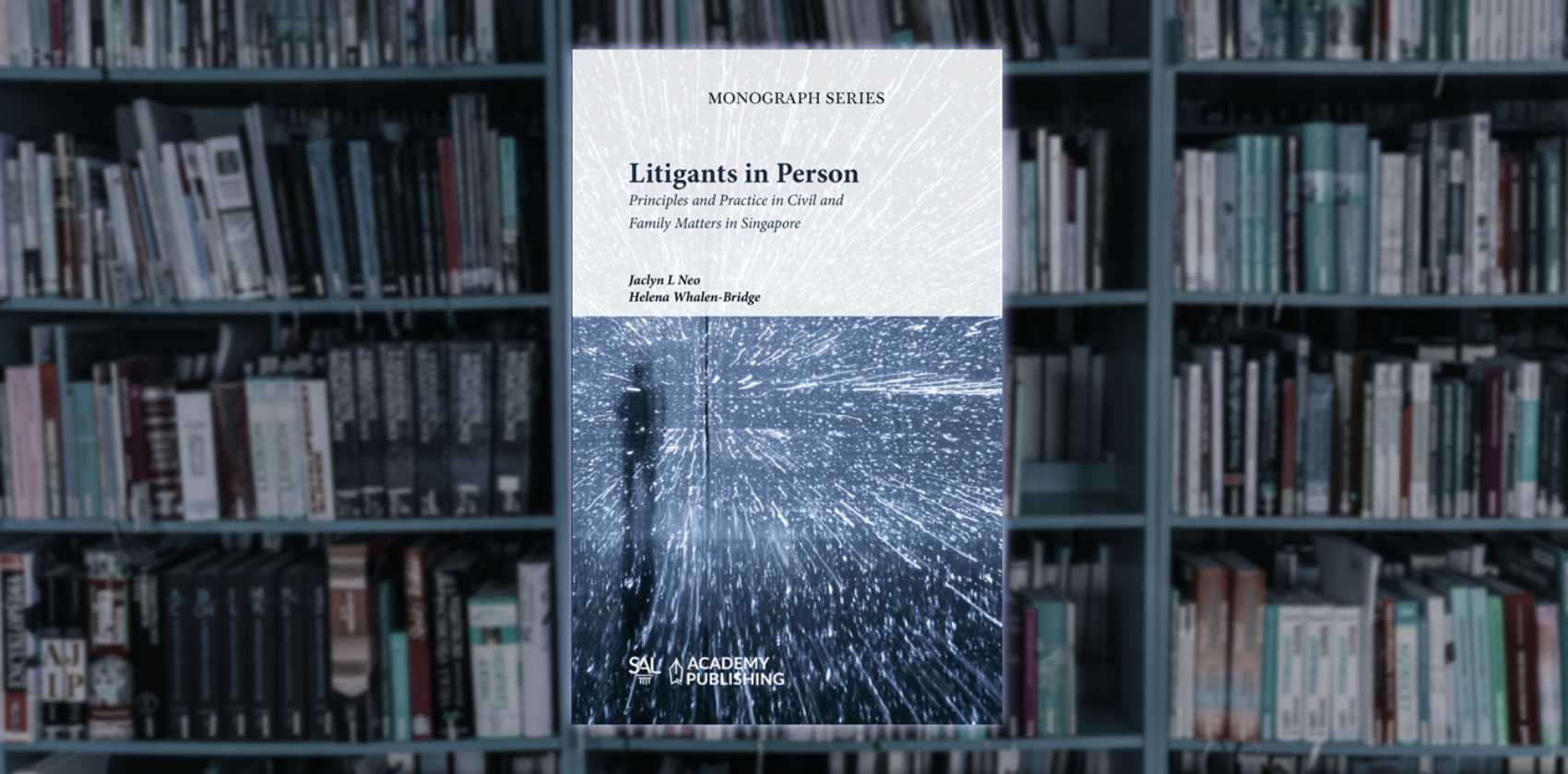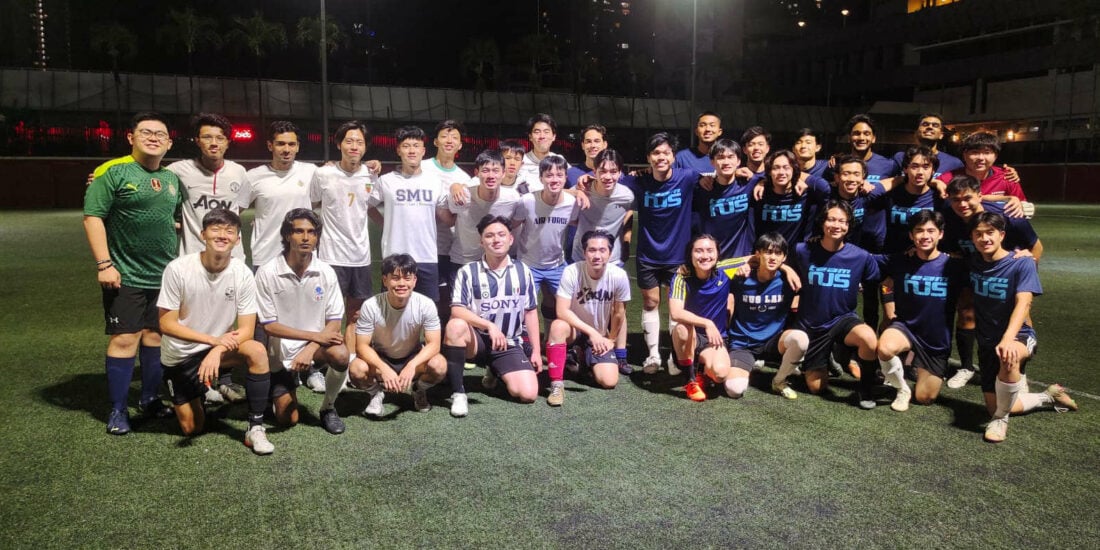Litigants in Person: Principles and Practice in Civil and Family Matters in Singapore
By Jaclyn L Neo and Helena Whalen-Bridge
Any experienced Singapore family law or civil litigation practitioner will be familiar with litigants in person (LiPs) in the legal system. They might have encountered a LiP on the opposing side while representing a client or provided pro bono assistance to a LiP at a legal clinic. What may be less apparent is the phenomenon of LiPs as a whole that has made a significant impact on justice systems in Singapore and elsewhere. The new book, Litigants in Person: Principles and Practice in Civil and Family Matters in Singapore, helps to explain this phenomenon and its transformative changes to the practice of law.
Despite its slim appearance, this book is by no means a light read. NUS professors Jaclyn L Neo and Helena Whalen-Bridge have marshalled an impressive monograph comprising summaries of Singapore cases, comparative research, data analysis and insightful reflections. As “the first academic analysis of the interactions between LiPs, judges and lawyers in Singapore”, it offers a crucial starting point for stakeholders in the legal profession to navigate the discourse on LiPs. In addition, it raises critical questions as to how and why LiPs are transforming the family and civil justice systems in Singapore.
LiPs are typically viewed as “outsiders”, and as underdogs in an adversarial system that was not designed for them but for lawyers. To many LiPs, the legal system is virtually impenetrable given the immense procedural and substantive legal barriers to overcome. Should LiPs therefore be considered anomalies in the system? The authors do not think so. They argue that LiPs should be seen as “legitimate users” and “proper beneficiaries” of the system, as their presence signifies the vitality of the rule of law. Moreover, the right to self-representation is an established right in Singapore.
But for access to justice to be meaningful, the authors emphasise that a formal right to pursue or defend a claim is not enough. There must be “real and substantive access”. For instance, court processes must be accessible, and legal information should be readily available, to LiPs.
The strength of this book lies in its analysis of how self-representation has affected different stakeholders ─ judges, lawyers and the LiPs themselves. Self-representation comes at a cost, which is partially shifted to judges and lawyers who have had to depart from their usual approaches. Judges, in the main, have given some leeway to LiPs in procedural and other matters, while lawyers have to maintain a greater professional distance from LiPs to avoid being enmeshed in ethical issues.
I found the findings from the authors’ online survey of 21 lawyers (see Chapter 5) particularly intriguing. One finding suggested that lawyers might be less willing to enter into settlement negotiations with a LiP as doing so might be viewed as unethical or difficult. Another interesting finding was that only a few respondents characterised their difficulties in dealing with LiPs as “ethical”. The authors rightly call for written guidelines to provide practical advice for the Bar on these matters.
A further noteworthy survey finding was the difficulty in managing client expectations. Clients who perceive that judges had given too much latitude to LiPs have considered whether to discharge their counsel, so as to level the playing field. At the same time, the authors observe from their extensive review of Singapore cases that judges cannot go too far in assisting LiPs lest they be accused of being unfair to the represented litigant. In sum, the right to a fair trial cuts both ways and it is not easy to balance the competing interests. Indeed, this theme of difficult “balancing acts” is regularly raised in the book. These frequent “dilemmas” should not, however, come as a surprise because fairness is a contested concept and the adversarial system is a natural habitat for divergent viewpoints.
In discussing the possible solutions, or “innovations”, to better serve LiPs (see Chapter 6), the authors astutely observe that in reality, “it is no one’s job in particular to assist LiPs”. Hence, multi-stakeholder “systemic” or fundamental solutions are needed to significantly plug the justice gaps. This chapter provides much for lawyers to debate about. For example, the authors discuss the opposing approaches of mandating legal representation and reducing or even eradicating reliance on lawyers through the creation of lawyerless tribunals. I wonder, though, whether the conversation should be framed in such binary terms, and whether a more nuanced and creative approach can be taken in seeing how to optimise lawyer involvement at different stages of the legal process, where it would benefit LiPs.
Another systemic or fundamental innovation that the authors identify is rethinking the legal process from a “people-centred perspective”. In my view, this rethinking is already evident from recent proposed reforms to the family and civil justice systems, many of which were developed with LiPs in mind. The authors highlight the concept of “legal triage”, borrowed from the medical context, which involves apportioning court resources based on the litigant’s justice needs and the level of complexity of the case. The authors correctly observe that if legal triage results in shortening the procedures that were “developed to ensure fairness between opposing parties”, this may raise deeper questions as to whether the right to a fair trial could be undermined.
All in all, this book is an excellent effort by the authors to dissect the complex phenomenon of LiPs in Singapore through a comparative lens. As the authors frankly acknowledge, their findings were limited by a lack of available data and the small sample sizes of the LiPs and lawyers surveyed. Nevertheless, it is evident that they have extracted as many insights as possible from the limited data samples. I would personally welcome a second edition of this book in due course, which, given the “formidable questions” posed by the phenomenon of LiPs, could adopt a broader interdisciplinary perspective with contributions from other relevant fields such as public policy, data analytics and behavioural science.
For more information or to purchase the book, click here.







